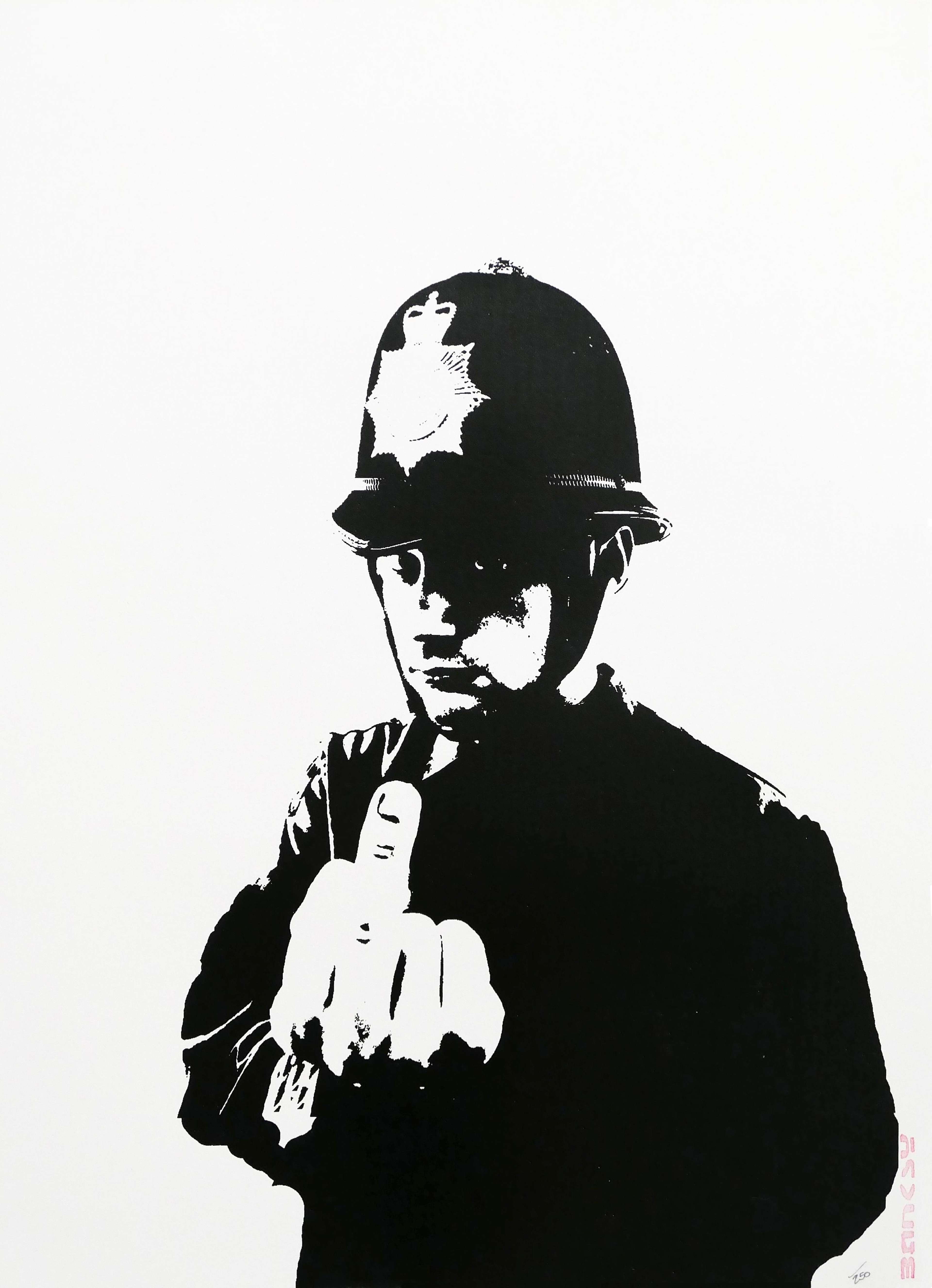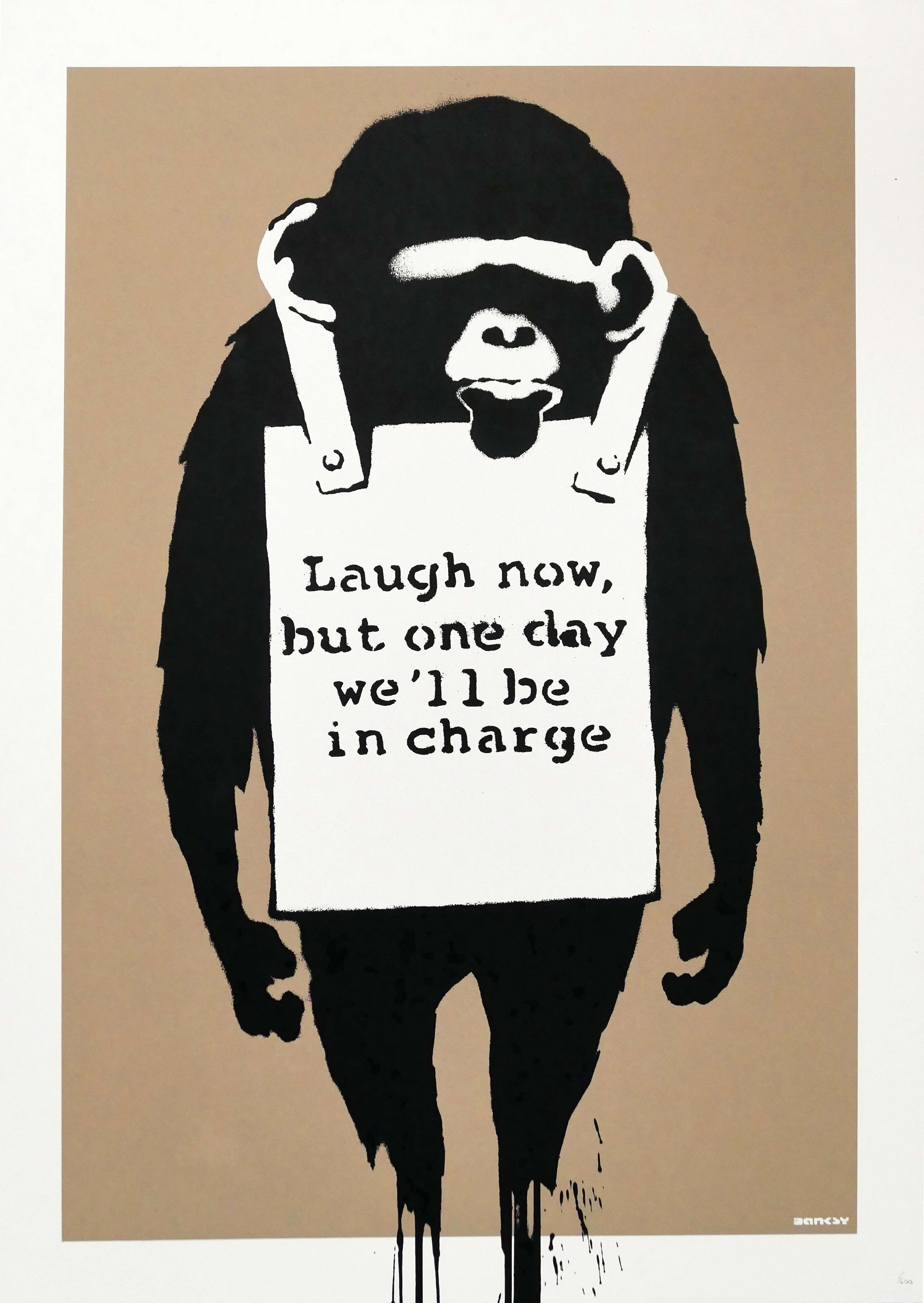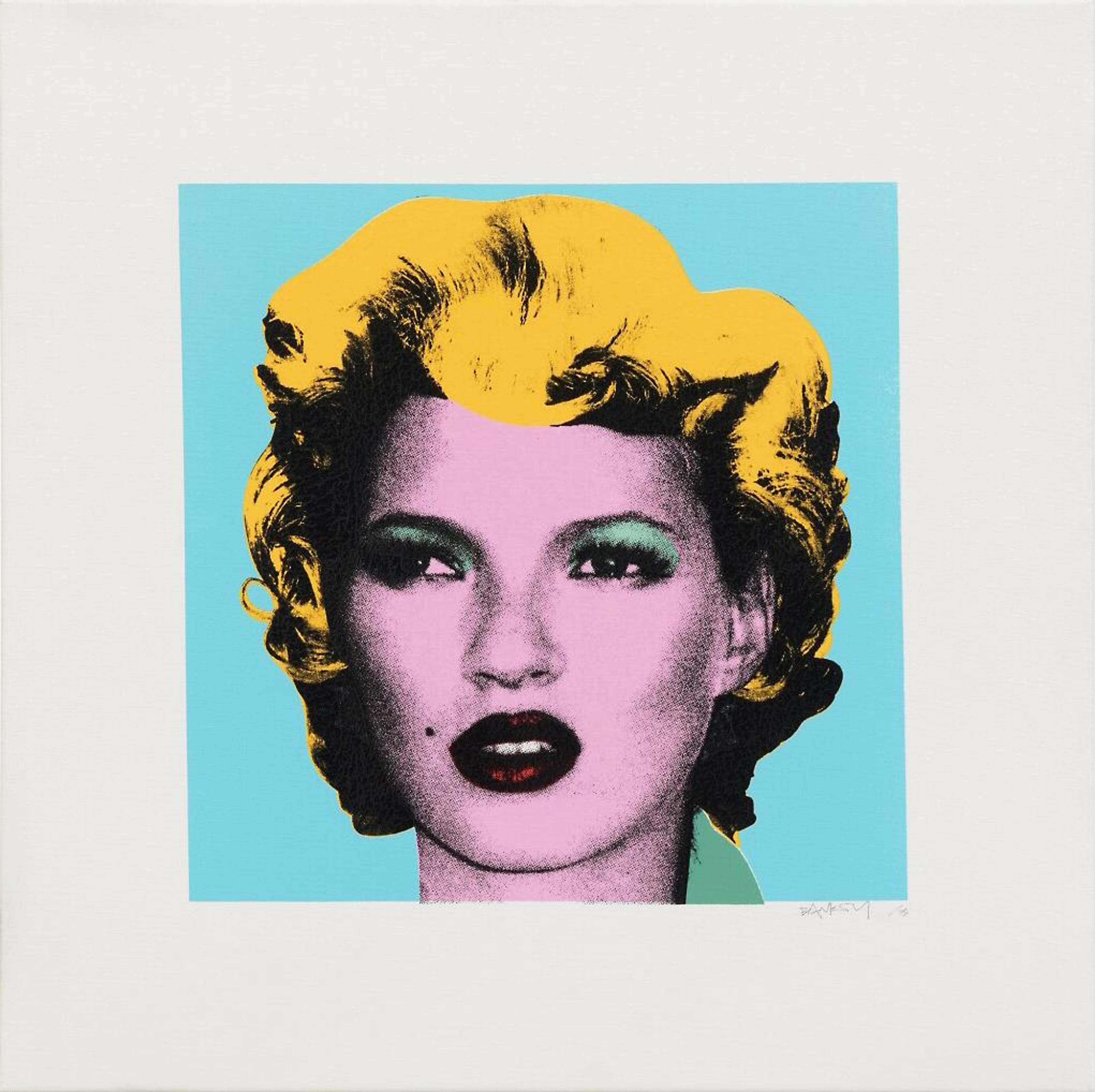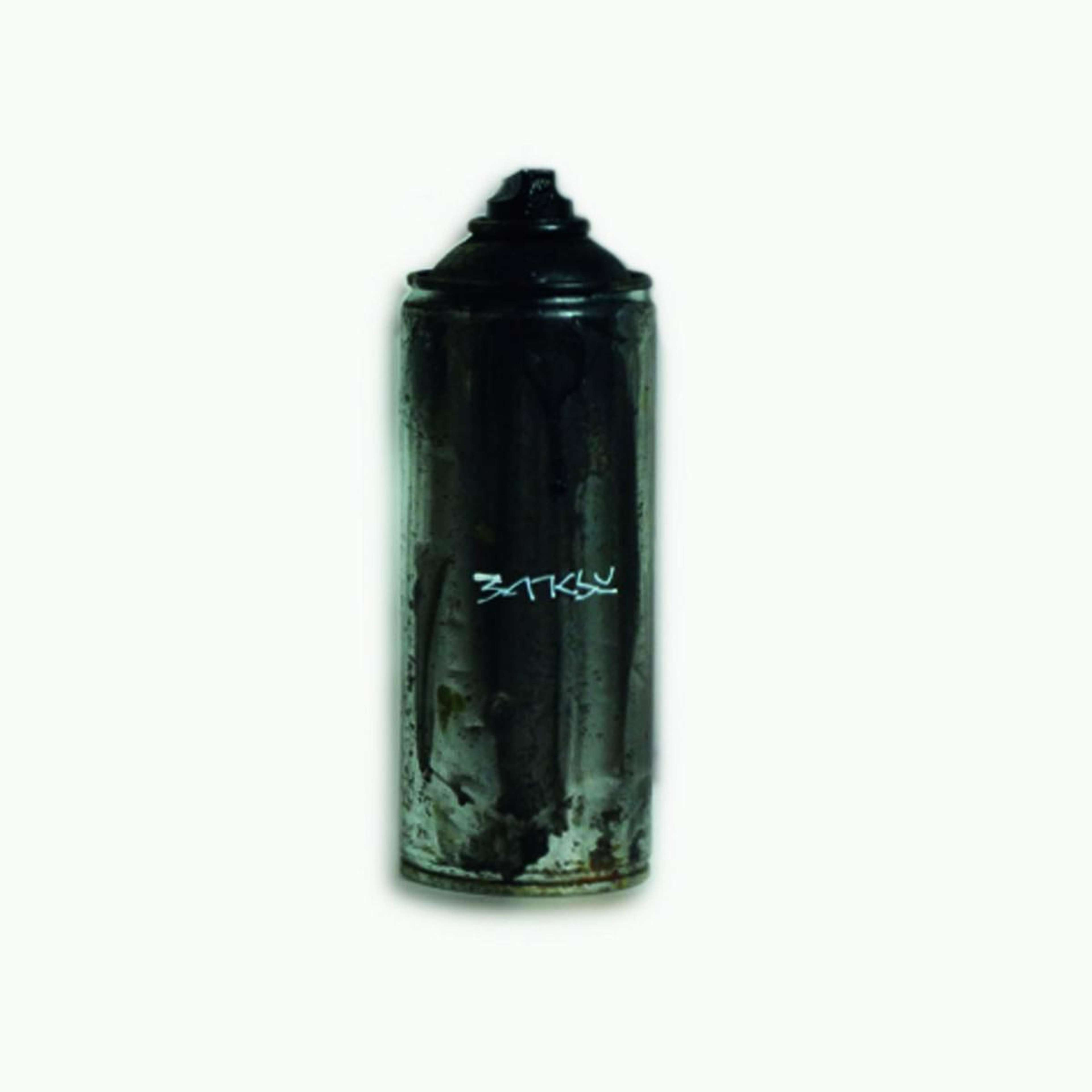 Rude Copper © Banksy 2002
Rude Copper © Banksy 2002
Banksy
269 works
The story goes that when Banksy was just starting out on his graffiti career in the early 90s in Bristol he would be painting freehand when someone would come along and he would have to run away, leaving his work unfinished. It was during one of these moments, as he was hiding from the police under a bin truck that he noticed the stencilled numbers on the vehicle’s bumper; this gave him an idea and next time he went out tagging he brought with him a ready-made template which he could simply spray onto a wall and walk away from in a matter of seconds.
Banksy's Latest Stecil Exhibition: Cut & Run
With all eyes and excitement turned to Glasgow's Gallery of Modern Art where Banksy will stage his first solo exhibition in 14 years, ”CUT & RUN: 25 Years Card Labour’’ which will shed light on the power of materiality and the unique techniques behind his renowned stencil artworks. We ask, how does he make these intricate and striking stencils, which convey so much in so few lines? And how do they translate into his screenprinted editions? Here we take a closer look at the notorious street artist’s technique, materials and MO.
What technique does Banksy use for his art?
In a recent video posted on Instagram, a figure wearing full protective gear is seen entering a tube carriage as if to disinfect its interior. In fact, this is Banksy posing as a London Underground worker in order to paint a series of his famous rats onto the walls of the train amidst the advertisements and safety notices. While offering a witty take on the coronavirus pandemic – as well as perhaps a critique of so-called ‘anti-maskers’ – the video also gives us a glimpse of Banksy’s technique:
- The artist is seen carrying a cardboard folder from which he removes a large sheet of paper or card which has been cut into a stencil of one of his famous rats.
- The artist then covers the sheet with black spray paint so only the parts that have been cut away retain the black paint.
- He then adds some finishing touches to each rat with a marker pen.
Older videos show Banksy using the same method for high profile works such as his Girl With Balloons on the controversial West Bank wall, this time with a piece of cardboard as the stencil, again adding further details by hand.
Banksy’s screen prints begin from the same notion:
- An image is cut out, with some parts left light and some dark, and exposed onto a silk screen.
- The artist or printer will then lay the screen onto a piece of paper and pass a squeegee over the top in order to let the ink pass through the parts that remain unexposed.
- This can be done many times as the screen lasts longer than the original stencil.
How does Banksy make his stencils?
The stencil method has been used by graffiti artists for years, including most notably Shepard Fairey and Blek Le Rat – arguably Banksy’s biggest influence – and remains popular as a fast way of transferring an image to a wall. Today there are numerous videos to be found on YouTube instructing anyone interested in ‘how to paint like Banksy’; beginning with a photograph you fill in the areas that should be coloured before carefully cutting those areas out with a scalpel to create a hole for the paint to pass through, much like how Andy Warhol first produced his prints of Marilyn Monroe and other famous faces. After the initial layer has been cut out, another layer of colour can be added by using the same image and cutting out the same or different parts in order to create an overlay effect. The initial blocking out process can also be done digitally if working from a photograph.
What paint does Banksy use?
While some stencils are painted on with air brushes or rollers, Banksy tends to favour the good old fashioned spray paint can. While it’s hard to know exactly what brand he uses, his love for the medium is demonstrated by a piece he made for his first venture into online shopping, Gross Domestic Product, last year. Banksy™ Black is a limited edition sculpture by the artist which also happens to function as a usable spray paint can, in a bid to, as the website puts it, ‘prevent a paint company from getting there first’. Featuring the artist’s brand on the front, fans who were lucky enough to get their hands on one may have been excited to finally try the paint signed by the master of the stencil himself, however a line at the end of the product description notes in typical tongue in cheek Banksy style, ‘Some of the contents may be missing.’
Can Banksy paint?
It’s been debated. While Banksy has painted impressive original works in the more traditional medium oils, his decision to more frequently produce works in spray paint with stencils has left the artist open to criticism by more conservative critics.
Since the dawn of Pop Art when artists such as Andy Warhol and Roy Lichtenstein began using ‘commercial techniques’ to paint and draw, some critics have been skeptical of art made with the aid of mechanical reproduction. While the painter’s hand is often hidden in such works, the genius and innovation needed for the concept and execution is immediately apparent. This can be said of Banksy too, who, while not spending hours painting everything by hand, continues to produce thought provoking works of art that captivate the public and the art world alike, which is no mean feat. As for his ability to paint, he has certainly mastered the art of the stencil and has shown his talent for draughtsmanship and composition, which is more than enough in our eyes.
So why does Banksy use stencils?
Having taken a peek into the famed and usually secretive artist's practice, the question remains: If Banksy is clearly talented in other mediums, why does he continue to use stencils for the majority of his works? If you ask us, this question seems unhelpfully biased in favour of more conservative art mediums. Many have rejected Banksy's art purely based on the belief that stencils are only valuable as an easy 'hack' to make art quickly. Of course, Banksy did initially choose to use stencils in order to cut the time during which he risked detection when producing illicit street art. But it is probably precisely because, as a medium, stencilling breaks the traditional mould of art, that Banksy continues to use the medium.
Yet, Banksy’s choice of medium is not purely intended to antagonise. It is clear from Banksy’s many successful stencilled murals, and screen prints that his stencils have laid a new outline for an art that is more egalitarian and politically vocal—one in which edges are unblurred and messages black and white.









